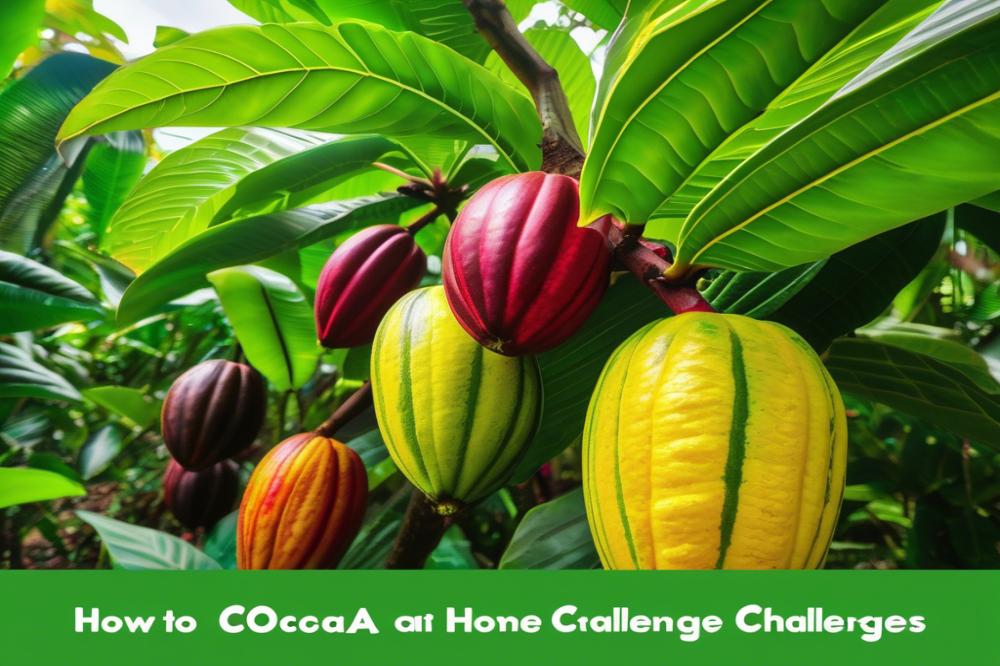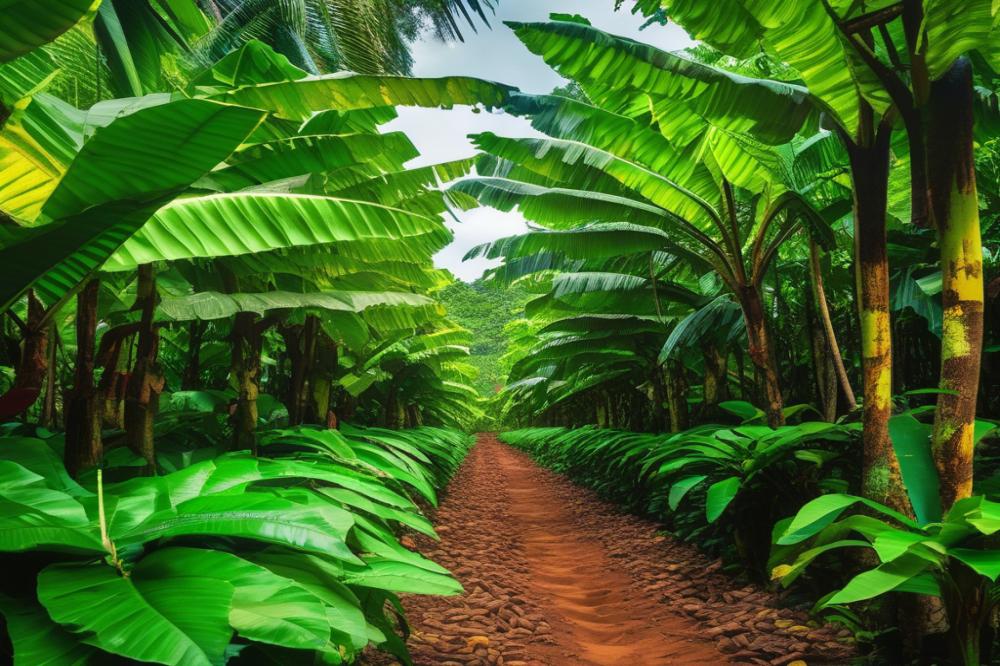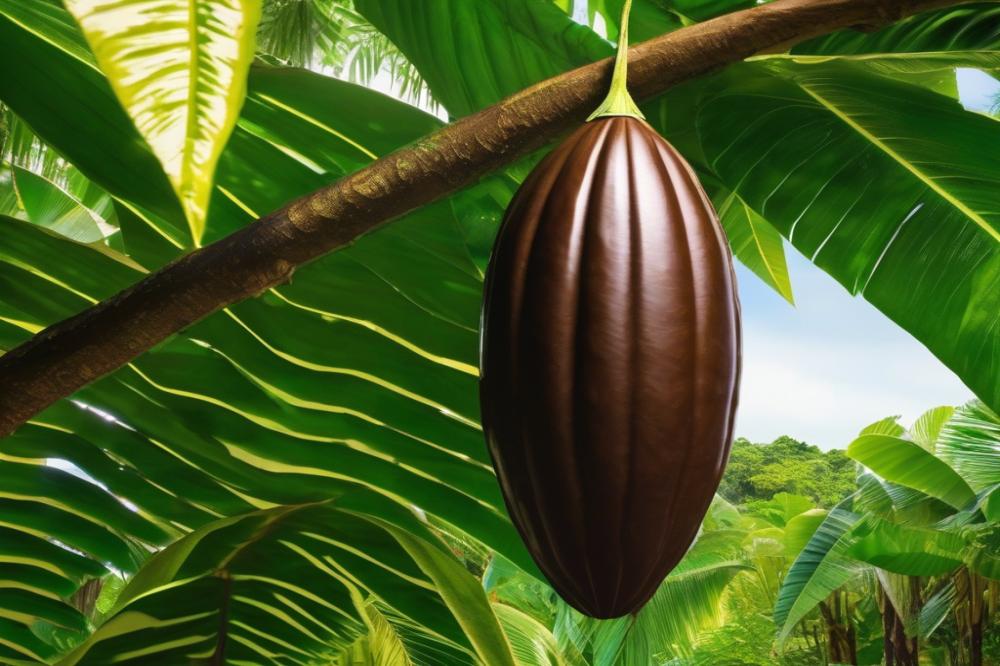Understanding the Cocoa Tree
The Cocoa Tree, a tropical plant known scientifically as Theobroma cacao, holds immense significance worldwide. It produces cacao beans that are harvested to create chocolate, a beloved treat enjoyed by many. This delightful connection to chocolate makes the tree fascinating for both casual gardeners and chocolate enthusiasts alike.
Learning to grow a cocoa tree at home opens new doors in the realm of Home Gardening. Not only does it provide a unique challenge, but it also allows plant lovers to delve deeper into the intricacies of care and cultivation. Understanding its specific growing conditions is essential for any aspiring gardener. Cacao trees thrive in humid climates with rich, well-draining soil and consistent temperatures. With the right knowledge, even those with limited gardening experience can nurture this remarkable plant.
However, the journey is not without its challenges. Aspiring cocoa cultivators may face issues related to pest management or the need for appropriate pruning techniques. There is a learning curve in managing such factors as climate needs and soil requirements. Despite these hurdles, the rewards of cultivating a cocoa tree can be substantial. Imagine harvesting your own cacao beans and enjoying the rewarding experience of chocolate cultivation right from your backyard. This endeavor cultivates a sense of achievement and connection to the food we consume, making it all worthwhile.
Cocoa Tree: Understanding the Basics
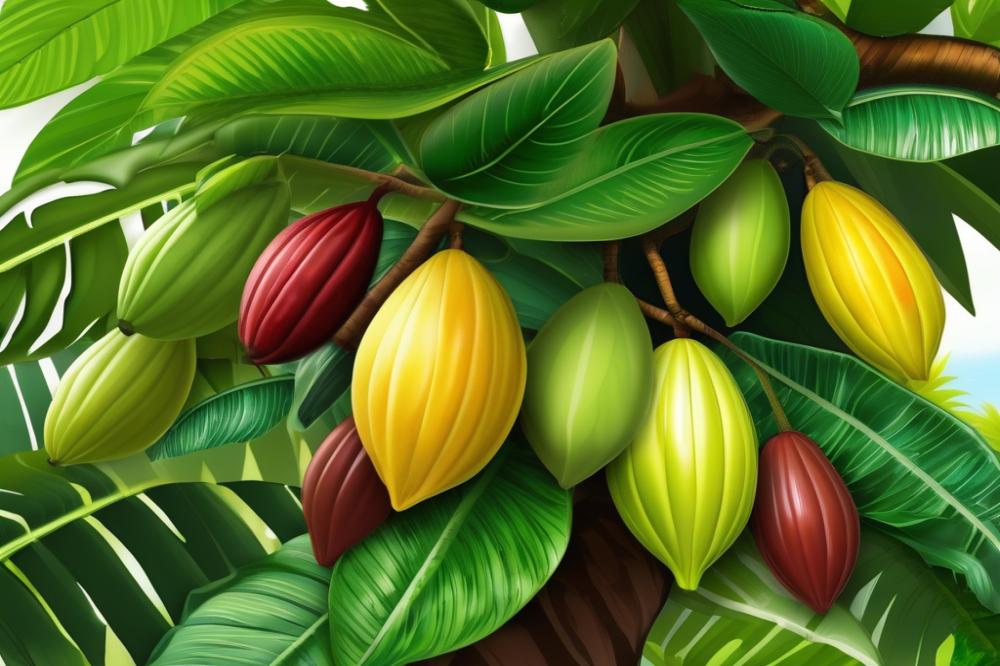
The cocoa tree, known scientifically as Theobroma cacao, has origins in the lush tropical regions of Central and South America. This plant thrives under specific conditions, requiring warmth and humidity to flourish. Ancient civilizations, such as the Aztecs and Mayans, revered the cacao bean as a sacred gift from the gods, using it not only as food but also in ceremonies.
Many people wonder about the difference between cocoa and cacao. Cacao refers to the raw, unprocessed form of the bean, often praised for its health benefits. Cocoa, on the other hand, describes the processed product, commonly found in chocolate. While both terms sound similar, they indicate different stages in the chocolate cultivation process.
Tropical Plant Characteristics
Like most tropical plants, cocoa trees have distinct needs for successful growth. High humidity and consistent temperatures between 65°F and 90°F are essential. Soil requirements include well-draining, rich organic material to support the plant during its growth stages. Indoor gardening of these trees can be possible, but it requires a careful setup to mimic their natural environment.
Cocoa trees are evergreen, meaning they retain their leaves throughout the year. Shade is critical, especially when young, as direct sunlight can damage the delicate leaves. Pruning techniques play a vital role in maintaining plant health and encouraging growth. Regular trimming helps shape the trees while allowing air circulation and light penetration.
Managing pests can pose challenges for hobbyists. The tree is susceptible to a range of insects and diseases. Hence, diligent plant care routines become necessary. Regular inspections and natural pest deterrents can protect these trees from common threats, keeping them healthy and productive.
Climate needs are paramount for the success of a cocoa tree. A balance of moisture and warmth mimics the tree’s native habitat. When considering its care, understanding these factors lays a solid foundation for anyone eager to grow cocoa at home.
Growing Conditions for a Cocoa Tree
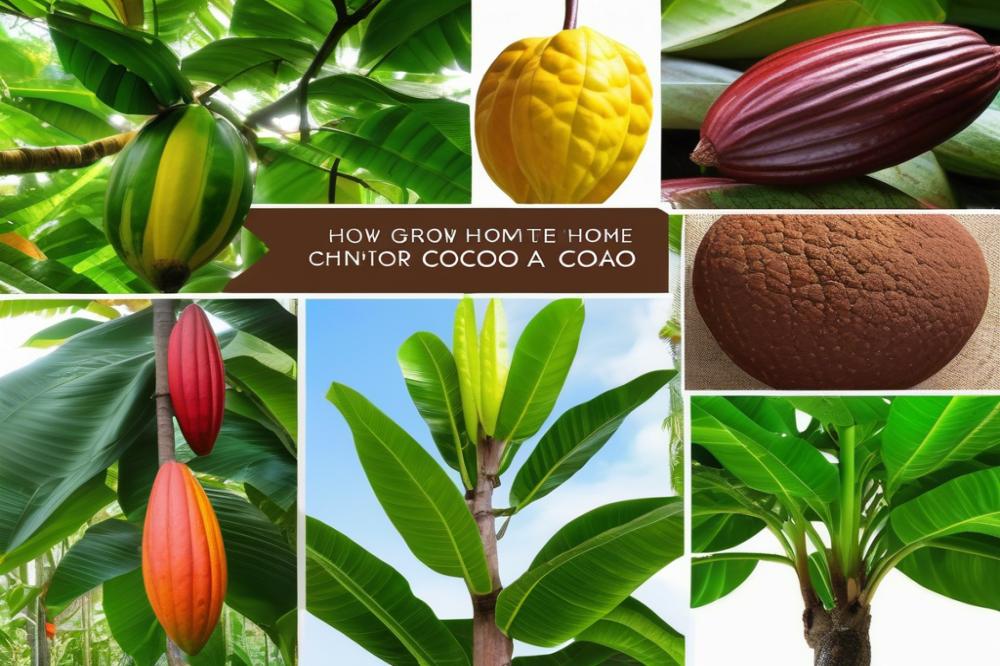
To thrive, cacao requires specific climate needs. This tropical plant favors warm temperatures, ideally between 60°F and 90°F. Fluctuations may stress the tree, affecting its overall health. Rainfall is also important; it thrives with about 40 inches of rainfall annually. During warmer months, consistent moisture helps growth, while dry spells can hinder development and yield.
Soil requirements play a critical role in healthy growth. A rich, loamy soil with good organic matter promotes better root development. The pH level should range from 6 to 7.5 for optimal nutrient availability. Drainage is essential as waterlogged soil can lead to root rot. Adding compost or mulch can improve both nutrient content and texture, enhancing the growing conditions for the cacao plant.
Humidity levels can affect how well the tree grows. Cocoa trees flourish in environments with humidity around 70% to 90%. When grown indoors, maintaining humidity can be tricky. Misting leaves or using a humidity tray can help create a more suitable atmosphere. Proper light exposure is also vital. Ideally, the plants need bright, indirect sunlight for several hours each day, as direct sun can scorch the delicate leaves.
For those interested in indoor gardening, suitable conditions must be replicated. A warm room with lots of indirect light can nurture a young tree. Grow lights may be necessary in darker months. Ensure pots have good drainage holes to prevent root rot. Regular plant care, including watering and monitoring humidity, will help the tree thrive indoors. When growing this unique plant, remember to observe and adjust to its specific needs for the best results.
Plant Care for Cocoa Trees
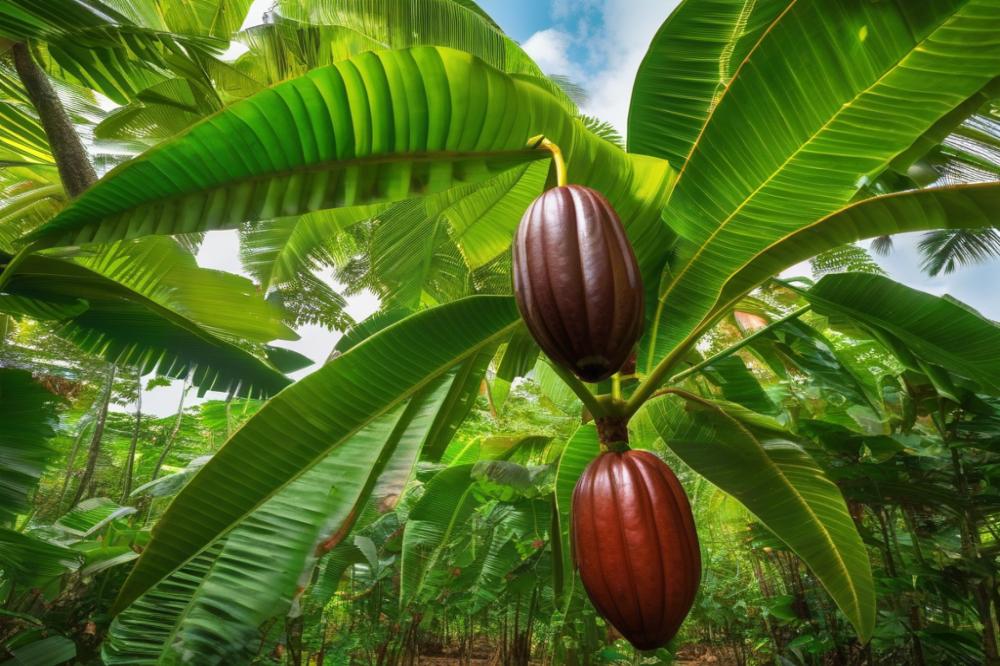
Watering Needs and Techniques
Cacao requires consistent moisture to thrive. The watering regime should mimic its natural tropical habitat. Check the soil regularly to avoid overwatering, as this can lead to root rot. Aim to keep the top inch of soil damp. Using distilled or rainwater is ideal, as tap water may contain chemicals that harm the plant. A drip irrigation system can provide a steady supply of moisture without soaking the roots. Indoor gardening can be more challenging due to dry air, so consider misting the leaves occasionally.
Fertilization Methods for Healthy Growth
Regular feeding is crucial for a cocoa tree’s development. Organic fertilizers, such as compost or worm castings, work well to enrich the soil. Look for a balanced fertilizer that contains nitrogen, phosphorus, and potassium. Apply it every six to eight weeks during the growing season. When selecting fertilizers, choose those specifically designed for tropical plants. Micronutrients, like magnesium and calcium, also support healthy growth. Additionally, make sure the pot has good drainage to prevent nutrient buildup.
Pest Management Strategies: Common Pests and Prevention
Several pests can threaten your cacao plant. Aphids, mealybugs, and whiteflies are common culprits. Regularly inspect the leaves for signs of infestation. If you notice pests, treat them promptly with insecticidal soap or neem oil. Preventive measures include maintaining good air circulation around the plant and avoiding overcrowding. Pruning techniques can help improve airflow, reducing the risk of pests. Also, consider introducing beneficial insects, like ladybugs, to your gardening space. Keeping the growing area clean will deter unwanted visitors as well.
Pruning Techniques for Cocoa Trees
Regular pruning is vital for optimal growth and yield. Cocoa trees thrive best under proper care and attention. Each cut allows for better air circulation and sunlight penetration. This practice can lead to healthier plants that produce more cacao pods.
Step-by-step guide to pruning
First, gather your tools. A sharp pair of pruning shears will work well for thin branches. For larger limbs, consider using loppers or a pruning saw. Clean your tools to prevent diseases before making any cuts.
Next, examine the tree closely. Look for dead or diseased branches. Removing these will help prevent pest infestations. Also, check for crossing branches that may rub against each other. Clearing these away promotes a healthier structure.
Begin pruning at the base. Start with the lower branches to create a strong trunk. As the tree grows, continue to shape it. Focus on maintaining open spaces between branches for better air flow.
When and how to prune for optimal results
Timing your pruning is essential. The best period is during the dry season. This is usually when the tree is dormant. Avoid pruning during heavy rains as roots become stressed.
Make cuts at a slight angle just above a bud or leaf node. This encourages new growth. Focus on removing about 20% of the foliage during each pruning session. Too much pruning can shock the plant, leading to reduced yields.
Monitor your plants afterward. Keeping an eye on their recovery helps with future plant care. If you notice increased growth, your pruning technique was effective. Remember, every tree grows differently. Adapt your methods as needed.
Challenges in Growing Cocoa Trees at Home
Growing cacao at home can be quite a task. Many individuals face common issues that can hinder their success. One significant hurdle is meeting the necessary climate needs. Cacao originates from tropical environments. These conditions can be tough to replicate indoors. Insufficient humidity or temperature fluctuations can stress the plant. Sudden changes can even lead to wilting or leaf drop.
Sometimes, indoor gardening requires more than just basic care. Solutions to climate control problems may involve investing in humidity trays or misting the plants regularly. Keeping the temperature stable is vital. A heat lamp can help maintain warmth during cool seasons. Proper ventilation is also crucial, as stagnant air can affect growth.
Pests and Diseases
Pests can be a significant threat to your cacao trees. Common issues include aphids and mealybugs. Identifying these pests quickly is important for effective pest management. Regularly inspecting leaves can prevent infestations. Chemical pesticides should be used with caution. Many gardeners prefer organic methods, like using insecticidal soap or neem oil. Diseases can also impact plant health. Fungal infections such as black pod disease may appear under unsuitable conditions. Cleanliness and proper pruning techniques can help mitigate these risks.
Time and Patience Required
Successful cultivation is not an overnight process. It takes time and patience to grow cacao at home. Expect to wait months before seeing leaves flourish. Even longer is typically required for flowering and fruiting. This journey demands consistent plant care. Regular watering and mindful attention to soil requirements are essential. Adjustments may be necessary as the plant matures, and keeping a close eye on growth can help guide care decisions. With persistence, these tropical plants can thrive, adding both beauty and potential for fresh cocoa to your home.
Wrap-Up: The Journey of Growing Cocoa at Home
Reflecting on the benefits and challenges of cultivating your own cocoa tree is essential. Home cultivation can lead to fresh, organic cacao, perfect for making your custom chocolates. Imagine the satisfaction of enjoying treats made from your own efforts. However, it’s vital to remember the challenges, too. These trees require specific growing conditions, warmth, and humidity, which can be difficult to replicate in many households.
Starting the journey might seem daunting, but the rewards can be worth it. Enthusiasts often find joy in nurturing their plants, watching them grow, and eventually yielding fruit. Taking that first step might feel like a leap, yet nothing can compare to the satisfaction of harvesting your own cocoa pods.
In closing, growing this extraordinary plant can result in more than just ingredients for chocolate. It can become a passion, a way to connect with nature, and provide a unique hobby. The payoff is not solely about the cocoa itself, but also the experiences and lessons learned along the way. So, why not dive into this adventure? Your chocolate cultivation journey awaits!

